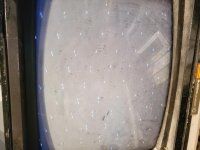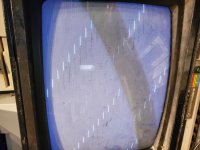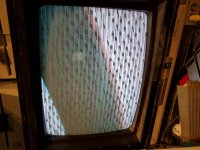falter
Veteran Member
I'm not sure how it is on other machines, but the Tandy 1000's are able to operate the keyboard lights independently, at least for a while. When I had a blown '245 on my HX, I was able to toggle the numlock and caps a few times before the keyboard controller locked up. That '245 buffer was on the data bus by the expansion header - half the gates were bad, and was causing the entire bus to lock up while the address lines kept going.
I think the IBM XT had a 4.77MHz processor, same as the 1000. Are you able to swap the CPU from your XT?
Interestingly the 245s are among the few chips that are socketed. But I have swapped those with others I have and no effect. The only thing that changes things at all seems to be pulling either the CPU or PIC.. if those go the snow changes into lines.
I have checked the voltages after 5 minutes of run time.. they are all well within spec.




